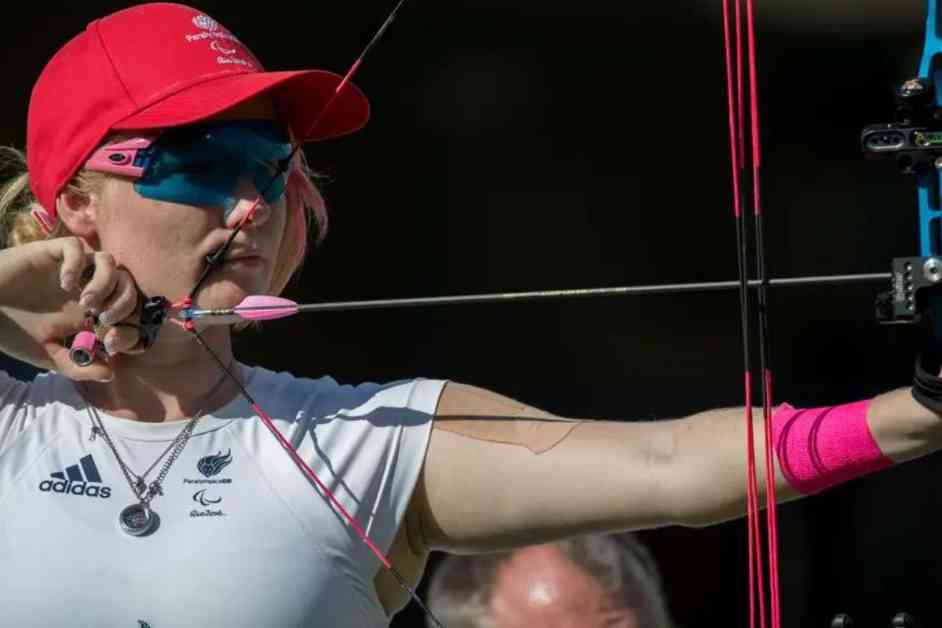The Art and Science of Archery at the Olympics: A Deep Dive into Patience and Precision
When we think of the Olympics, we often envision athletes sprinting on the track, diving into the pool, or showcasing their skills on the gymnastics floor. However, there is a lesser-known sport that requires a unique blend of patience, precision, and concentration – archery.
Archery has been a staple at the Olympics since 1972, captivating audiences with its grace and skill. The word ‘archery’ is derived from the Latin term ‘arcus’, which means bow. Dating back to as early as 10,000 B.C., archery has a rich history that spans across civilizations, from being used for hunting in the Middle Ages to evolving into a competitive sport in modern times.
The Rules of Olympic Archery
In the individual event at the Olympics, archers must shoot 72 arrows in the qualification phase. The total score from this phase determines the rankings for the matchplay phase, where archers face off head-to-head. During the matchplay phase, archers compete in best-of-five sets, with each set consisting of a predetermined number of arrows.
For the individual event, a set comprises three arrows, while it is four arrows for a mixed team event and six arrows for a team event. Archers earn two points for winning a set with a better aggregate score, and in case of a draw, each archer or team is awarded one point.
The first archer or team to accumulate six points is declared the winner in a matchplay, with the losers being eliminated. This format continues until the final, where the gold medalist emerges victorious, while the runner-up takes home the silver.
In the event of a tie after five sets, the matchplay transitions into a tie-break. Individual events are decided by the archer whose arrow lands closest to the target, while in a mixed team or team event, the team with the superior total score emerges as the winner.
The Pinnacle of Success: Olympic Archery Champions
Among the most successful Olympic archers is South Korea’s Kim Soo-Nyung, who boasts four gold medals – one individual and three team – along with an individual silver and bronze. On the men’s side, American archer Darrell Pace has clinched two individual gold medals in 1976 and 1984, in addition to a team silver.
South Korea stands out as the dominant force in Olympic archery, having amassed 27 golds, nine silvers, and seven bronzes. Notably, South Korea has swept all the gold medals in the women’s team event since its introduction in 1988, showcasing their unparalleled expertise and dominance in the sport.
The success of Olympic archery is not only a testament to the skill and dedication of the athletes but also to the support and funding provided by initiatives like the National Lottery. With over £30 million raised weekly for Good Causes, including vital funding for elite and grassroots sports, National Lottery players play a crucial role in empowering Olympic and Paralympic athletes to pursue their dreams and inspire the nation.
As we delve deeper into the intricate world of Olympic archery, we uncover the artistry and precision required to excel in this ancient sport. From the intense focus needed to hit the bullseye to the strategic prowess displayed in matchplay, archery embodies the essence of competition and skill at the highest level.
The journey of an Olympic archer is one of dedication, perseverance, and unwavering determination. Each arrow released from the bow represents hours of practice, mental fortitude, and a quest for perfection. The archer’s ability to maintain composure under pressure and deliver consistent, accurate shots is a testament to their training and expertise.
The mental aspect of archery is equally crucial, as athletes must harness their focus and concentration to block out distractions and execute their shots with precision. Visualization, breathing techniques, and mental rehearsal play a pivotal role in preparing archers for the intense competition at the Olympic Games.
The physical demands of archery should not be underestimated, as archers require strength, stamina, and flexibility to draw the bowstring and hold steady while aiming. Proper form, posture, and alignment are essential to ensuring consistent and accurate shots, making physical conditioning a key component of an archer’s training regimen.
In addition to individual events, archery at the Olympics also features team competitions that highlight the collaborative effort and synergy among archers. The dynamics of a team event require coordination, communication, and trust among teammates to deliver synchronized performances and achieve success on the global stage.
As archers navigate the challenges and intricacies of Olympic competition, they draw inspiration from the rich history and tradition of the sport. Archery’s roots trace back to ancient civilizations, where it served as a means of survival, protection, and competition. The evolution of archery into a modern Olympic discipline reflects its enduring appeal and relevance in the contemporary sporting landscape.
The Olympic Games serve as a platform for archers to showcase their talent, passion, and dedication to the sport. The thrill of stepping onto the Olympic stage, representing their country, and competing against the world’s best athletes fuels their ambition and drives them to push beyond their limits in pursuit of excellence.
As we witness the drama, excitement, and emotion of Olympic archery, we are reminded of the values that define the sport – patience, precision, and perseverance. The journey of an Olympic archer is a testament to the human spirit, resilience, and the pursuit of greatness, encapsulating the essence of the Olympic Games and the enduring legacy of archery.





















